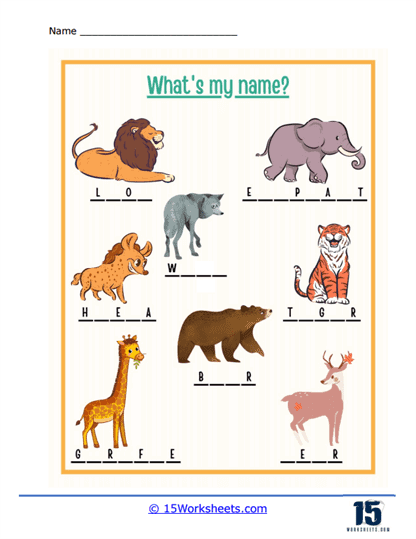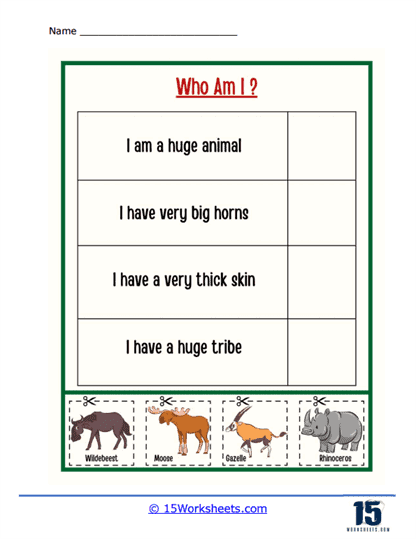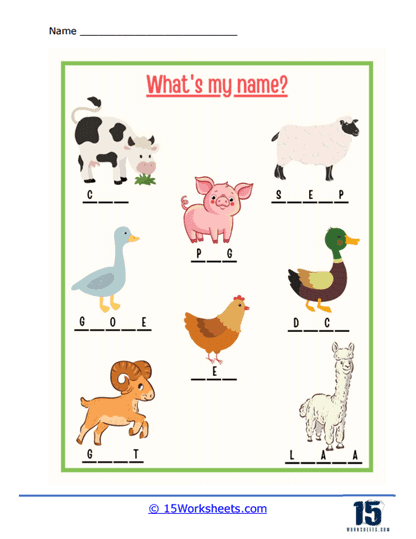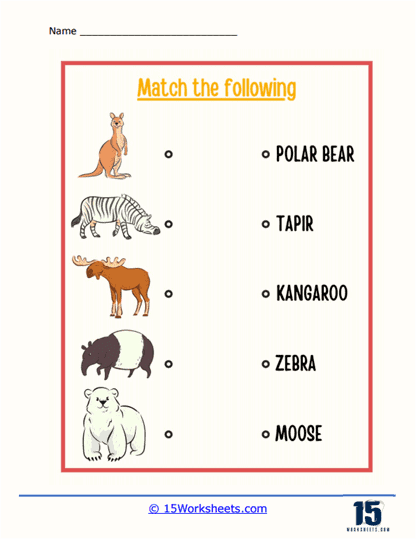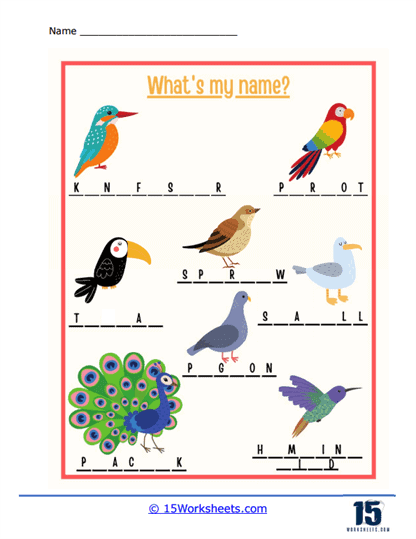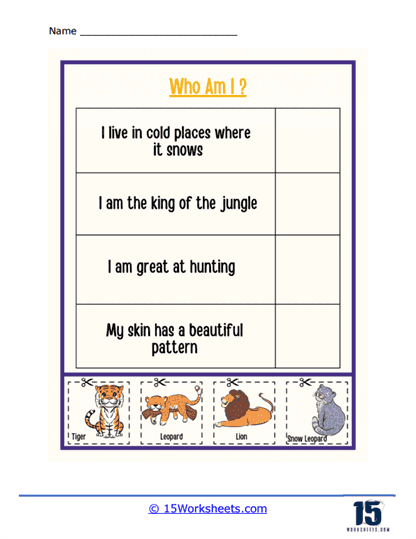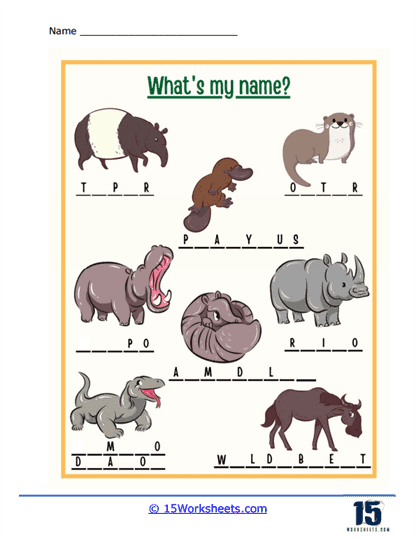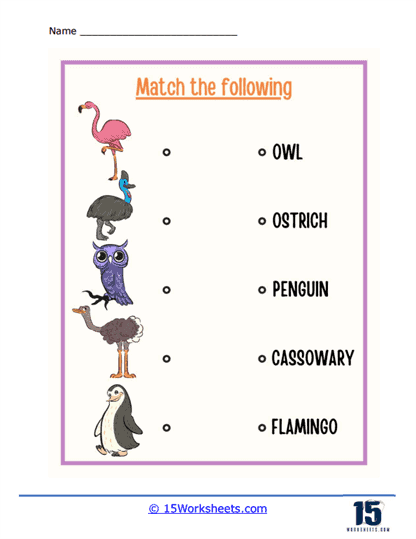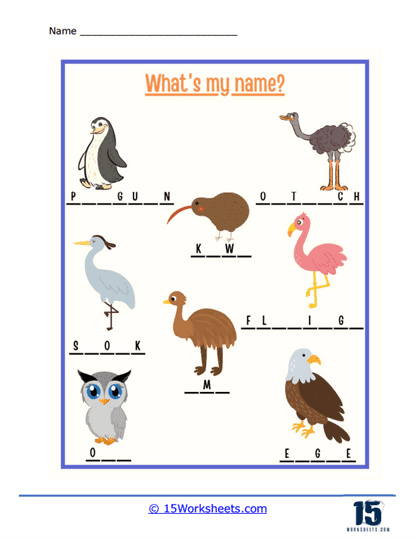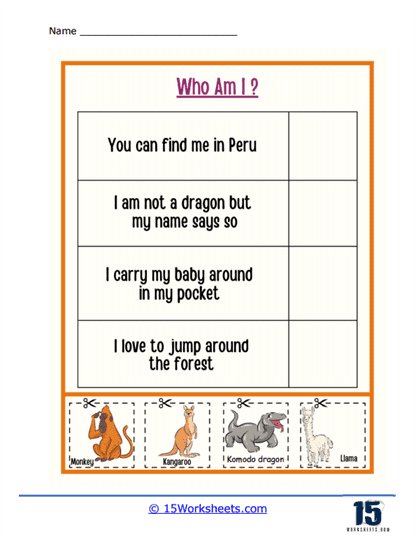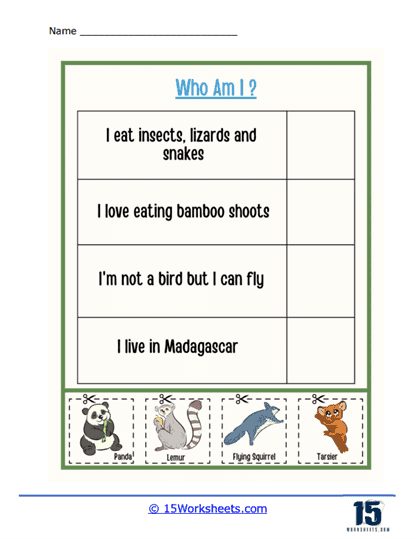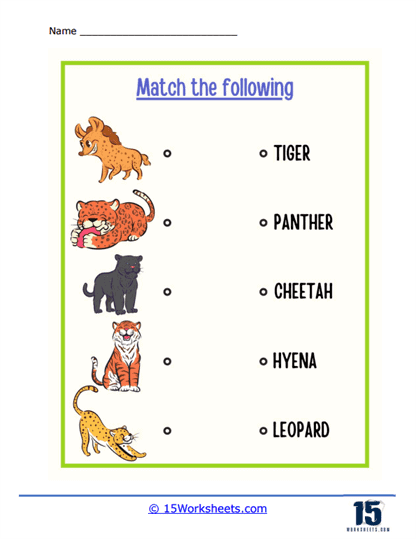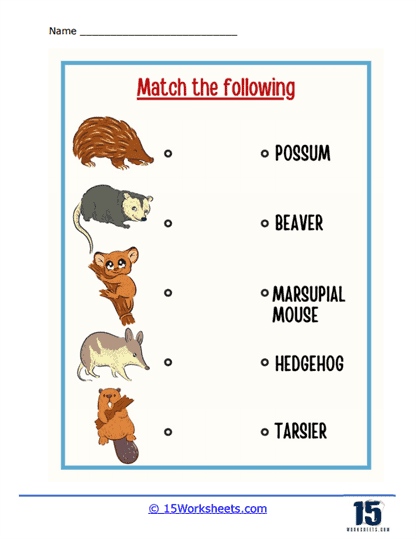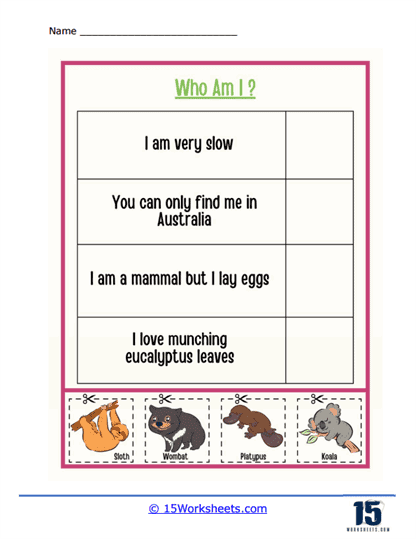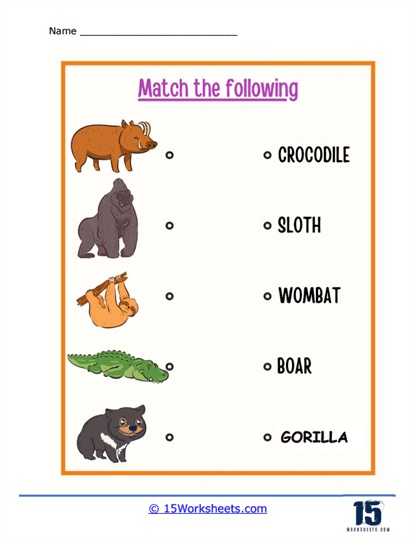Animal Names Worksheets
All About These 15 Worksheets
This collection of Animal Name worksheets is focused on helping students learn about animal names in a practical way. The majority of the exercises ask students to match pictures of animals to their names. This can help students to associate the names with the animals’ appearance and characteristics. In addition, there are worksheets that ask students to supply the missing letters to animal names, with a matching picture of the animal. This can help students practice spelling and improve their vocabulary.
Lastly, there are also worksheets that provide a list of descriptions for different animals and students would have to match them to the correct animal name. This type of exercise can help students learn about different animal behaviors and habitats while also testing their comprehension. These worksheets are designed to be engaging and educational, and they are suitable for students of various ages and proficiency levels in English.
Tips for Teaching Students the Names of Animals
Teaching students the names of animals can be a fun and engaging learning experience. To make the process more effective and enjoyable, follow these steps:
Start with Familiar Animals
Begin with animals that students are likely to recognize, like cats, dogs, and birds. This will build their confidence and help them understand the concept of animal names.
Use Visuals
Use flashcards, posters, or digital images to help students visualize and associate the animal names with their corresponding images. Visual aids can significantly improve retention and understanding.
Introduce Animal Categories
Organize animals into categories such as mammals, birds, reptiles, amphibians, and fish. Teaching animal names in groups can help students make connections and understand relationships between different types of animals.
Incorporate Games and Activities
Make learning fun by incorporating games and activities into the lesson. For example, you can play animal charades, animal bingo, or have students match animal names with their corresponding pictures.
Use Stories and Videos
Share interesting stories or videos about animals to keep students engaged and interested. These can be fictional or non-fictional, but they should incorporate the animal names being taught.
Encourage Group Work
Have students work in groups to research and present information about specific animals. This will help them practice their animal vocabulary while also developing teamwork and presentation skills.
Teach Pronunciation and Spelling
Encourage students to practice pronouncing and spelling the animal names correctly. Repetition and practice will help reinforce their learning.
Create a Word Wall
Designate a space in the classroom to display the animal names and their corresponding images. This visual reminder will help students review and remember the names more easily.
Assign Homework
Provide students with homework assignments that involve researching and writing about animals. This will reinforce their learning and help them explore the topic further.
Review and Assess
Regularly review the animal names taught and assess students’ progress through quizzes, games, or other assessment methods. This will help you identify areas that may need more attention or reinforcement.
Remember, each student learns differently, so it’s essential to adapt these strategies to fit their needs and learning styles.
North America is home to a diverse range of animal species, but some of the most common ones are the following.
- White-tailed deer: A medium-sized deer that is found throughout North America, from southern Canada to South America.
- American black bear: A large bear that is found throughout North America, from Alaska to Mexico.
- Coyote: A medium-sized wild dog that is found throughout North America, from Alaska to Central America.
- Gray wolf: A large wolf that is found in the northern regions of North America.
- Raccoon: A medium-sized mammal that is found throughout North America, from Canada to Panama.
- American beaver: A large aquatic rodent that is found throughout North America, from Canada to Mexico.
- Mountain lion: A large cat that is found in the western regions of North America.
- Moose: A large deer that is found in the northern regions of North America.
- Bald eagle: A bird of prey that is found throughout North America, from Alaska to Mexico.
- Wild turkey: A large bird that is found throughout North America, from Canada to Mexico.
Of course, this list is not exhaustive and there are many other species that can be found throughout North America, including numerous types of rodents, birds, fish, and insects.

